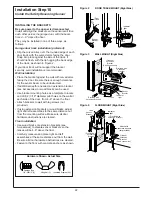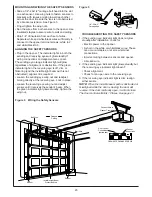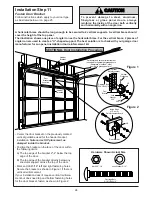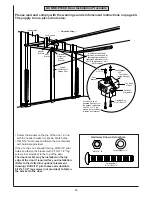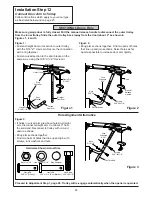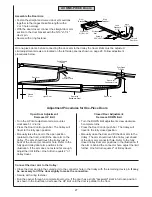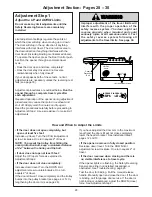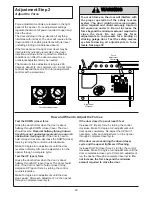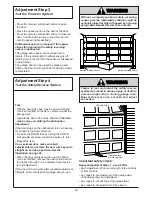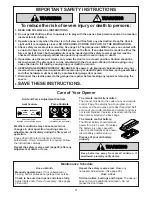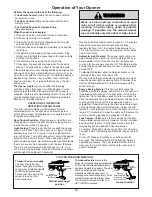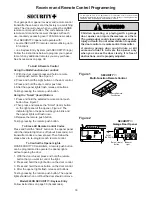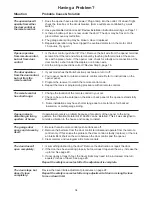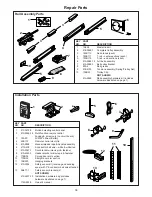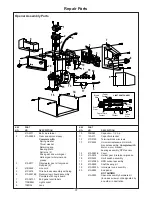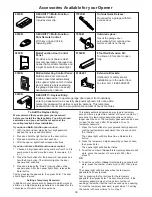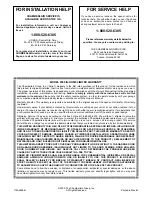
Having a Problem?
(continued)
Situation
Probable Cause & Solution
The opener strains
or maximum force is
needed to operate
the door:
The door may be out of balance or the springs are broken. Close the door and use the
manual release rope and handle to disconnect the trolley. Open and close the door
manually. A properly balanced door will stay in any point of travel while being supported
entirely by its springs. If it does not, disconnect the opener and call for professional
garage door service.
Do not increase the force to operate the opener.
The opener motor
hums briefly, then
won't work:
1. The garage door springs are broken. See above.
2. If the problem occurs on the first operation of the opener, door may be locked.
Disable the door lock. If the belt was removed and reinstalled, the motor may be out
of phase. Remove the belt; cycle the motor to the down position. Observe the drive
sprocket. When it turns in a clockwise direction and stops in the down position,
reinstall the belt.
Repeat the safety reverse test after the adjustment is complete.
The opener won't
operate due to
power failure:
1. Use the manual release handle to disconnect the trolley. The door can be opened
and closed manually. When the power is restored, press the Door Control push bar
and trolley will automatically reconnect (unless trolley is in the lockout position,
see page 32).
2. The Outside Quick Release accessory (for use on garages with no service door)
disconnects the trolley from outside the garage in case of power failure.
35
The door reverses
for no apparent
reason and opener
lights don't blink:
1. Is something obstructing the door? Pull the manual release handle. Operate the door
manually. If it is unbalanced or binding, call for professional garage door service.
2. Clear any ice or snow from the garage floor area where the door closes.
3. Review the force adjustment procedures on page 29.
4. If door reverses in the
fully closed position, decrease the travel limits (page 28).
Repeat the safety reverse test after adjustments to force or travel limits. The need
for occasional adjustment of the force and limit settings is normal. Weather
conditions in particular can affect door travel.
The opener lights…
The door reverses for
no apparent reason
and opener lights
blink for 5 seconds
after reversing:
don't turn on:
Replace the light bulbs (75 watts maximum). Use a
standard neck garage door opener
bulb if regular bulb burns out.
don't turn off:
Is the Light feature
on? Turn it off.
Check the safety reversing sensor. Remove the obstruction or align the receiving eye.
See page 23.
The door opens but
won't close:
1. If the opener lights blink, check the safety reversing sensor. See page 23
2. If the opener lights do not blink and it is a new installation, check the down force.
See Adjustment Step 2, page 29. For an existing installation, see below.
Repeat the safety reverse test after the adjustment is complete.


